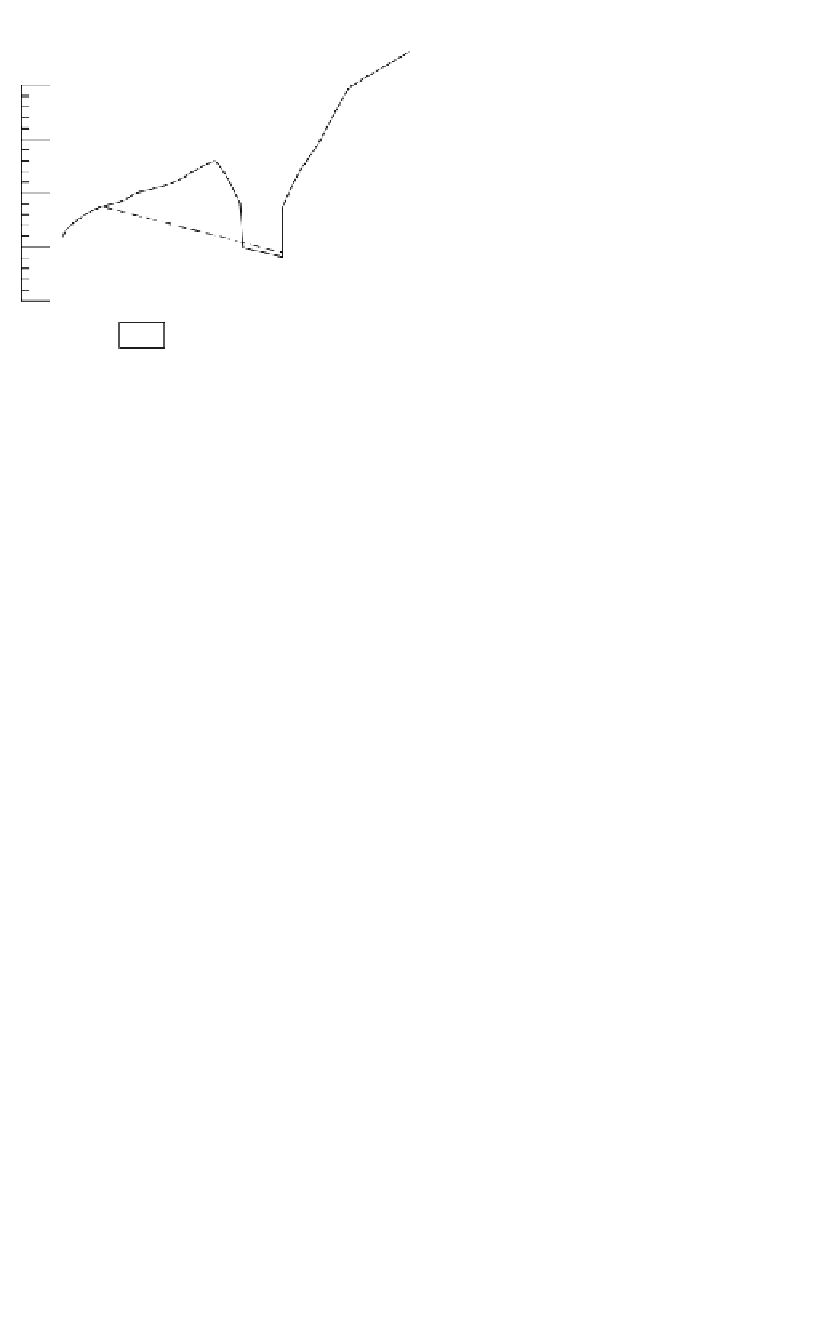Environmental Engineering Reference
In-Depth Information
SECTION C C'
SECTION L L'
line of L
L'
l
ine of C C
'
level
crest
inferred trace of main
basal zone of infilled
sheet joints
B
base of initial
excavation
initial
excavation
surface
A
main basal
zone of infilled
sheet joints
(clay seams)
final base of
excavation
final
excavation
surface
boreholes drilled to confirm
continuity of clay seams found
during construction
topsoils and slopewash
siltstone, variably weathered
siltstone, displaced and
dilated wedge
siltstone insitu, fresh, very
strong, showing trace of
cleavage
Figure 17.21.
Sturt Dam - sections through displaced wedge at the top of right bank (Courtesy SA
Water).
excavation reached the design levels. The mainly fresh rock exposed here showed a pat-
tern of near-vertical joints, most of which were infilled with up to 10 mm of high plastic-
ity clay. Downslope from these joints, the traces were found of 2 seams up to 50 mm thick
of similar clay, dipping gently and obliquely downslope and upstream. From this evidence
it was inferred that the gently dipping seams were infilled sheet joints. It was further
inferred that the whole rock mass above the lower gently dipping seam was a mechani-
cally loosened wedge or rock, which had dilated and moved slightly downdip along these
seams. The gently dipping seams were judged to represent kinematically feasible failure
surfaces. The extrapolated trace of the lower seam (
Figure 17.20
)
coincided with minor
depressions at the ground surface. This inferred model was confirmed by high quality core
drilling (Figures 17.20 and 17.21), which recovered the predicted seams and showed fresh
siltstone with few tightly closed joints below the lower seam.
To reach this undisturbed fresh rock, the foundation was deepened locally by 4 to
7.5 m. Immediately after the deepening, monitored cracks and displaced traces of presplit
holes indicated that the isolated downstream part of the wedge had dilated further, and
was creeping downdip. It was braced immediately by a concrete buttress placed on the
undisturbed rock and extending across to the upstream side of the excavation. The final
design provided extra support to this upper part of the dam by means of prestressed
anchors installed through it into the foundation.
17.8.3.2.2 Clyde Dam (New Zealand)
This gravity dam of maximum height 100 m is located on schist, about 3 km from the
Dunstan Fault, which is believed to be active (Hatton and Foster, 1987; Paterson et al.,
1983). At the dam a steeply dipping fault parallel to the river passes upstream-down-
stream through the foundation. This River Channel Fault comprises up to 8 m of crushed
material and is believed to be a normal fault with some horizontal component. Seismotec-
tonic studies carried out during the dam construction indicated that up to 200 mm of dis-
placement might be induced across this fault under the dam, if the Dunstan Fault suffered
a major rupture. The dam design was modified by the inclusion of a slip joint above the
fault, as shown on
Figure 17.22
.
The joint is designed to accommodate up to 1 m of dip-slip


























